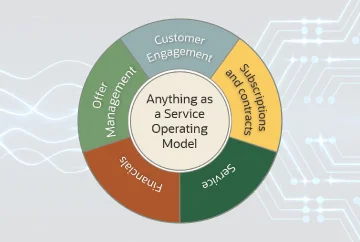Manufacturers are impacted by huge disruptions in new equipment sales due to pandemic and competitive pricing. They are taking a focused approach towards opening more unique avenues and seek out opportunities for revenue growth.
Most industry leaders are attempting to shift from cost optimization to speed optimization, profitability to revenue growth, customer satisfaction to delivering exceptional customer experiences.
Manufacturers and OEMs are mapping customer journeys to ensure long-term engagement by delivering the right product focusing on customer’s needs that in time leads to the future growth of the organization. This shift is challenging as many industries are tightly integrated with hi-tech infrastructure and trying to implement the best practice to scale the business. In other words, they are unable to scale their successes across the enterprise if they are keeping to their legacy methodologies. Therefore, there’s an urgency to carve out the foundation of new business models better fitting the current ecosystem and organization goals.
What is XaaS and how does it influence the Business Landscape?
Just like Software-as-a-Service (SaaS), Information-as-a-Service (IaaS), or Communications Platform-as-a-Service, XaaS refers to Anything-as-a-Service where products and services can be purchased as a subscription-based on a “pay as you go” model.
The past 18 months have seen a striking change in the way we work and our overall business operations. Product-based companies started to provide services for goods sold. Products and services are bundled together as offerings. Exploring opportunities for recurring revenue, product companies have started opening Global Support Centers across the world.
Businesses have to invest based on products, cost, and quality. However, the lack of seamless operations and communication across different business verticals proves to be a roadblock, and there is a high probability of losing a customer due to heavy competition.
Shifting from a product-centric outcome, businesses are focused on creating value-based outcomes. Businesses focus on segments to offer products and costs cut out for each segment, aiming to derive a higher margin on sales based on customer engagement. Most of the companies target B2B customers and enable B2C customers as well through an undiversified business model. There is a greater need to identify investments that will help in cost reduction. Investments are made based on the market trends of the existing products that encompass all modern technologies - OSN, IoT, AI, ML, and predictive analytics.
XaaS model helps generate revenue that can be directed towards the upgradation or cross-selling of the new product that ensures profitability. A XaaS business model keeps up with customer demands while growing profits. Supported by a customer engagement model that drives adoption, expansion, and cost-effective renewal of customer contracts, enterprises can switch towards creating a broader portfolio, including subscription-based offers.
From Hitech to automotive, manufacturing, real estate, and more, everyone likes to operate on a XaaS based business model, embracing the culture across all the operations of their businesses. Here are a few examples of the various XaaS enabled services to give you the flavor:
- Mobility-as-a-Service offered by the automobile industry
- IT-as-a-Service inclusive of a wider gamut of services such as SaaS, PaaS, IaaS, DBaaS, DaaS, DRaaS, CaaS offered by Hitech industries
- BFSI industry enables Insurance-as-a-Service and Banking-as-a-Service offering end-to-end financial solutions
- Manufacturing-as-a-Service offered by the manufacturing and heavy engineering industry
- Healthcare-as-a-Service is offered by the medical and healthcare industry
- Real estate is also developing its own portfolio of Space-as-a-Service, covering the tidbits of everything this sector has to offer







